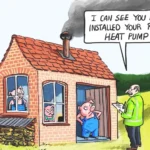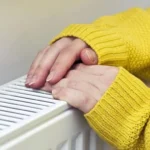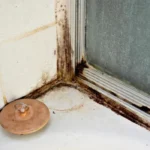Get the heat back into your home! NOW!!


Plumber - Paul
Paul's a member of the Chartered Institute of Plumbing & Heating Engineers, Water Regs UK (formerley WRAS – Water Regulations Advsiory Scheme) certificated as well as a qualified unvented cylinder engineer and a qualified heat pump engineer.
Cold radiator(s)? In the UK radiators are a big deal. And can be the difference between a cold miserable winter and a warm cosy one. And, and we all know that this comes with a price – your heating bill, so being able to turn off and control your radiators when you want to is essential to keeping your energy costs under control.
So, whether you’re a landlord, tenant, or homeowner this blog will help you to keep your radiators working properly and not wasting your money.
Radiator not heating Up?

Cold radiator(s)? Let’s start here. For many households, a cold radiator’s not uncommon and could potentially be the sign of a boiler or central heating system problem. But before you pick up the phone to your plumber, there’s a few things you can do yourself to make sure that their visit if it’s needed isn’t wasted and doesn’t cost the earth through having to check every potential cause.
First things first. When you come across a cold spot on your radiator, check if the:
- Thermostat’s set too low
- Radiator’s timer has been mis-set
- Radiator’s valves are closed
These should be a quick fix for most people. But if it’s not one or more, you may need to get a professional in as your cold radiator may be the result of:
- Faulty central heating circulation
- Blockages in your central heating system
- Air pockets in your central heating
Some of my radiators aren’t working?
Cold radiator(s)? If all your radiators aren’t heating properly or are cold, then there could be a problem with your boiler or central heating system.
But, if some of them are, whilst others are cold, the following checklist will help.
Some parts of my home have cold radiators?
Cold radiator(s)? Central heating systems pump a flow of hot water to your radiators from the boiler returning to collect more heat.
If you’re normally able to control the temperature in separate areas of your home, you have a “zoned” home. And if one of these zones is cold, it’s possible that it’s been turned off – an easy fix. If this doesn’t do the job, there could be a fault with a diverter valve that controls heating water going to that zone, or there’s a blockage in the zone that needs to be taken care of.
Upstairs radiators cold?
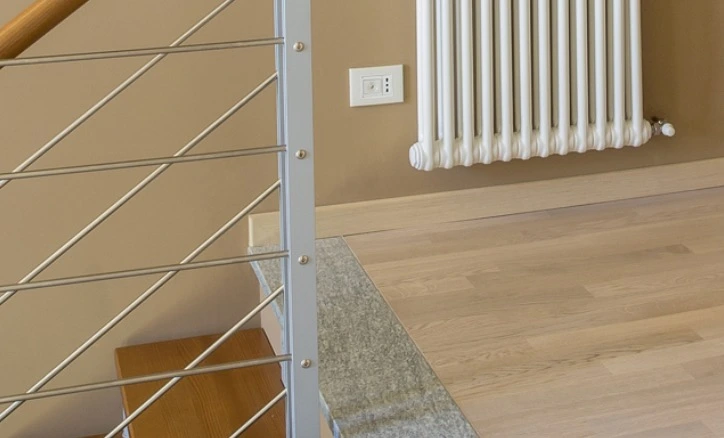
Cold radiator(s)? If your home’s upstairs radiators are cold and you’ve a vented heating system – one with loft tanks, see if the smaller of these, the feed and expansion tank (not the larger cold-water tank) is empty and dry. If it is, check that the ball valve isn’t stuck or the inlet’s blocked.
With either of these, if you’re a confident DIYer you may be able to free the valve and or clear the obstruction if there’s one. When you do refill the tank, ensuring enough room for the water to expand when the system heats up and just enough water to float the ballcock and switch off the water coming in from the cold-water tank.
When the feed and expansion tank’s full the upstairs radiators should start heating. But it’s a good idea to get a professional plumber in to work out why the cistern ran dry in the first place and make sure that there’s not a larger problem to deal with.
Downstairs radiators cold?
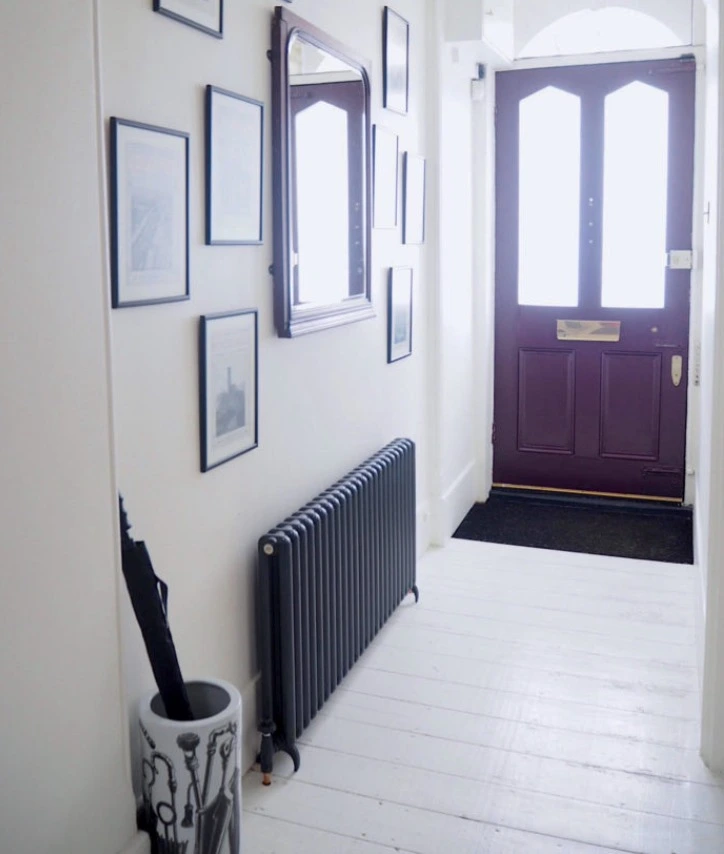
Cold radiator(s)? Downstairs radiators not heating up? There may be a pump problem – so possibly broken or not giving out enough power to push the water around the heating system.
If the pump’s hot (not warm) or making a grating or grinding noise, it’s worth getting it checked as these’re signs that it’s not working as it should and on the way to breaking down.
One radiator not heating up and staying cold?

Cold radiator? If you’ve a single cold radiator check that the radiator valves on the sides aren’t shut. If they’re open and the radiator’s still cold, it’s possible that one of the valves is blocked or there’s a blockage in the pipe going to the radiator.
Top of the radiator’s cold? Why??
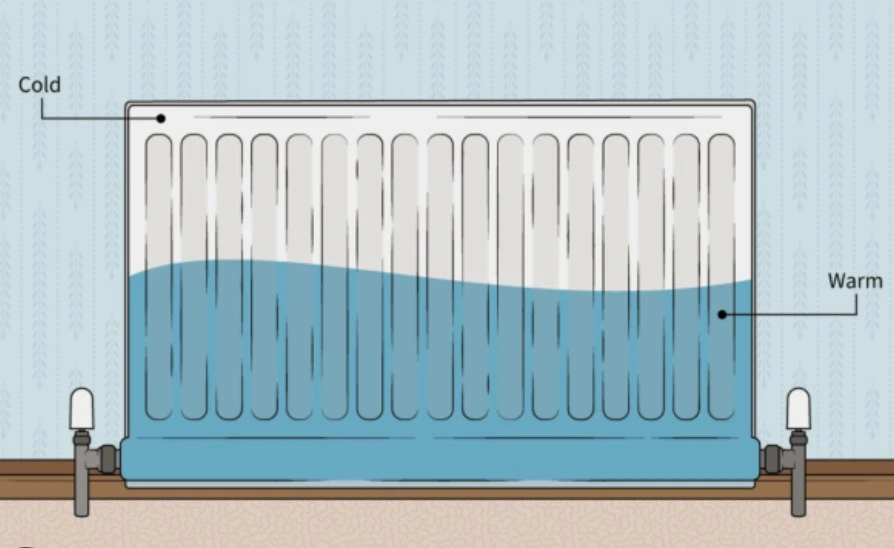
Cold radiator? If a radiator top’s cold, this is usually due to air being trapped inside. If it’s air, it’s a simple fix. To release the trapped air, you’ll need to bleed the radiator.
Bleeding a radiator with a radiator key
You can do this using a radiator key which needs to be inserted into the bleed valve with a cloth held underneath to soak up any escaping water. Once the key is in place, turn it anti-clockwise and you’ll hear a hissing sound as the air escapes. When water starts leaking from the valve it’s time to shut the valve using the key through turning it clockwise. Make sure that valve’s closed tight, but don’t over tighten as you’ll make it harder to turn next time or may even break the valve.
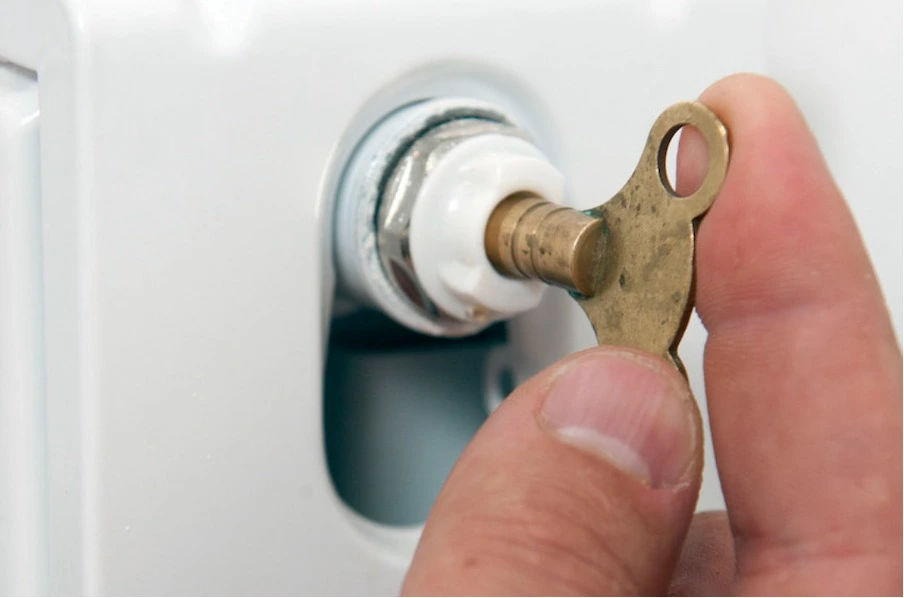
Bleeding a radiator without a key
If your radiator doesn’t need a key, you’ll most likely need a screwdriver with the correct head shape. Use a flat-headed screwdriver if the valve has a small slit in the middle. Always make sure you’ve the right screwdriver otherwise you’ll damage the radiator, stripping the screw, stopping you from loosening or tightening the valve in the future. Also, never use pliers of any kind as you’re likely to damage the radiator, which’ll cost a lot more to fix or even need to be replaced!

I’ve bled my radiator, but it’s still cold. Why?
After bleeding a radiator and it’s still not getting hot, there might be a problem with your thermostatic radiator valve (TRV).
If this is the case, check for a stuck pin in the valve which is easy to do. If it’s not this, there may be blockages in the central heating system which a plumber will be able to sort out.
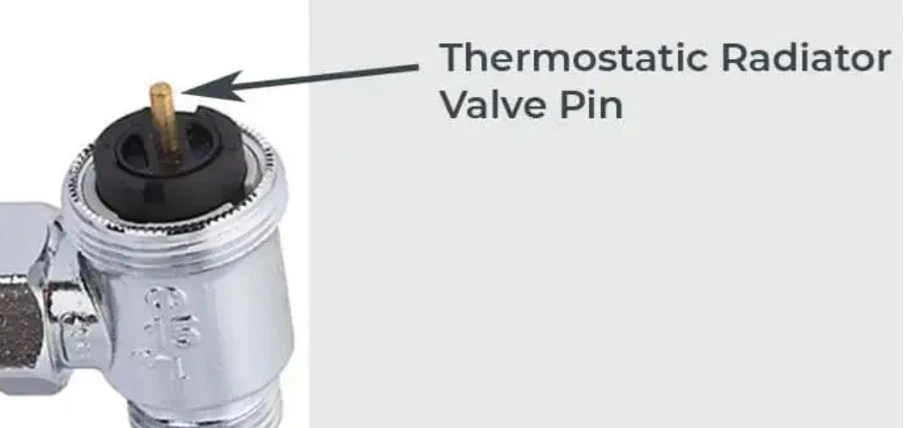
The middle of the radiator’s cold. Why?
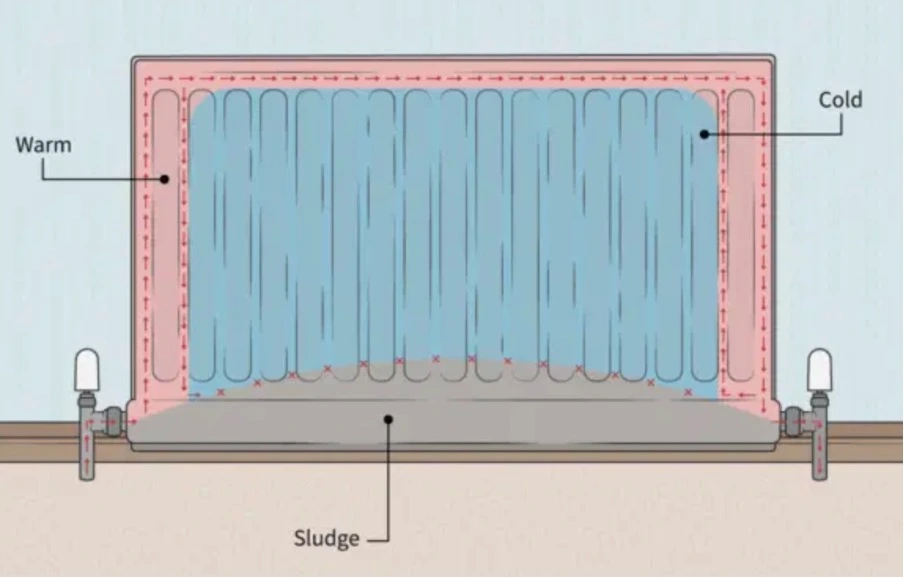
Cold radiator(s)? If your radiator’s middle is cold, there’s likely to be a build-up of sludge or debris that’s blocking the flow of hot water round the radiator. To sort this out, you’ll need to clean the inside –
If you’ve an open-vent system
Your local DIY store will be able to sell you a heating system sludge remover, and always follow the manufacturer’s instructions.
If you’ve a sealed or pressurised system (Megaflow etc.)
You’ll need a plumber or heating engineer to flush it out and in some cases your radiator will need to be replaced.
Radiator hot at the top and cold at the bottom? Why?
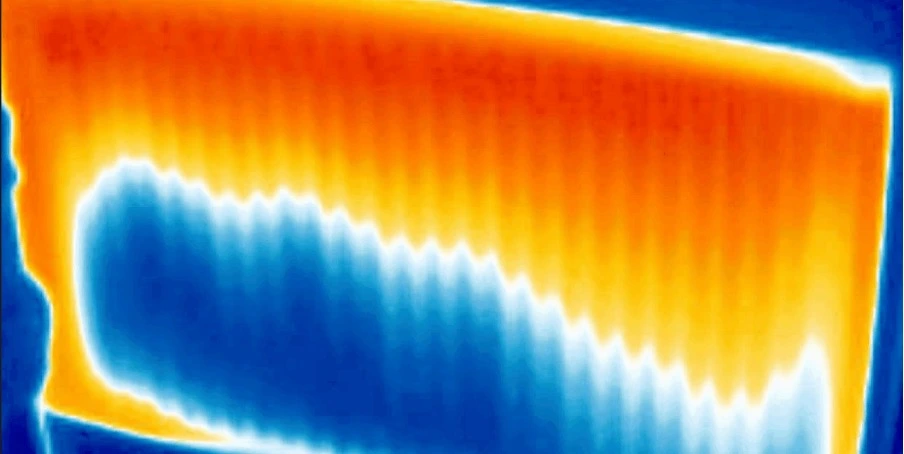
Cold radiator? If your radiator’s cold at the bottom and hot at the top it’s likely that the water’s flow is being blocked by a build-up of sludge, rust and or limescale. Metal pipes corrode over time and send flakes of rust through the system gathering in layers of gunk at the radiator’s bottom.
So, there’s unwanted stuff inside your radiator! This reduces the heat radiating into your home – cuts your home’s heating efficiency. And can also create more serious blockages damaging your heating system.
If you’ve an unpressurised tank fed open-vent system. As with the cold radiator middle, using a sludge remover will help to flush your radiator. But this may not be enough and if the sludge remover doesn’t sort this out, a power flush is your next stop.
And if you’ve a sealed or pressurised system you’ll similarly need a plumber or heating engineer to flush it out.
If most or all your radiators are hot at the top and cold at the bottom, a power flush is in order. This I’ll need to be done by a professional who’ll flush the bad stuff out into an outside drain.
.... and if all your radiators are cold, but you’ve got hot water from your taps?
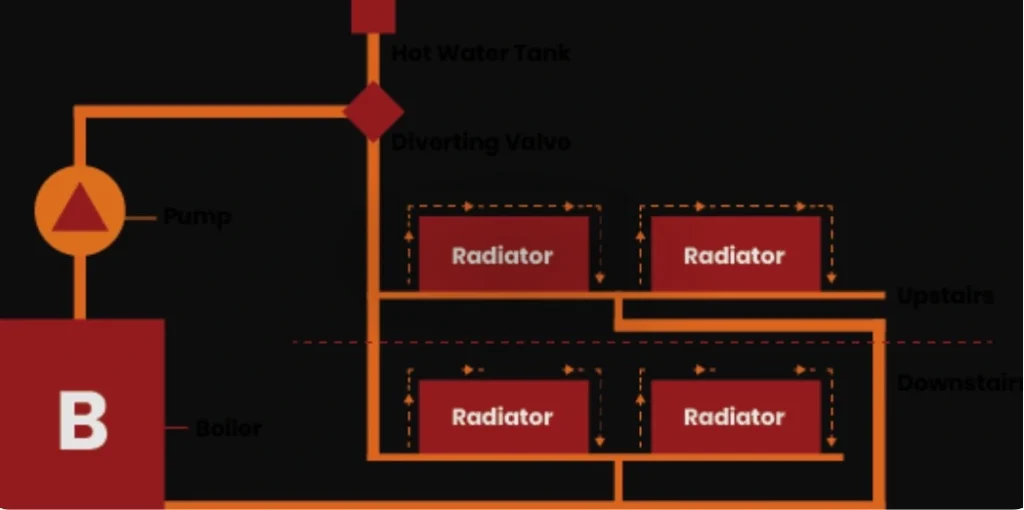
This could be one or a combination of things. A good starting point is:
- Checking your diverter valves (two /three port) which determine where your boiler’s hot water goes to (taps and or central heating) aren’t stuck and’re working properly.
- Having your thermostat looked at to ensure that when it’s turned up, it’s properly calling for heat/hot water.
- Having your heating pipes and pump cleared of any trapped air or airlocks.
- Having your heating pipes cleared of any physical blockages – via a magnacleans or powerflush.
Next steps?
Once you’ve managed to diagnose the problem with your radiator(s), the next step is get on with fixing. And if you’d like a hand or a professional to do this for you, we’re ready and waiting!
Central heating inhibitor 101
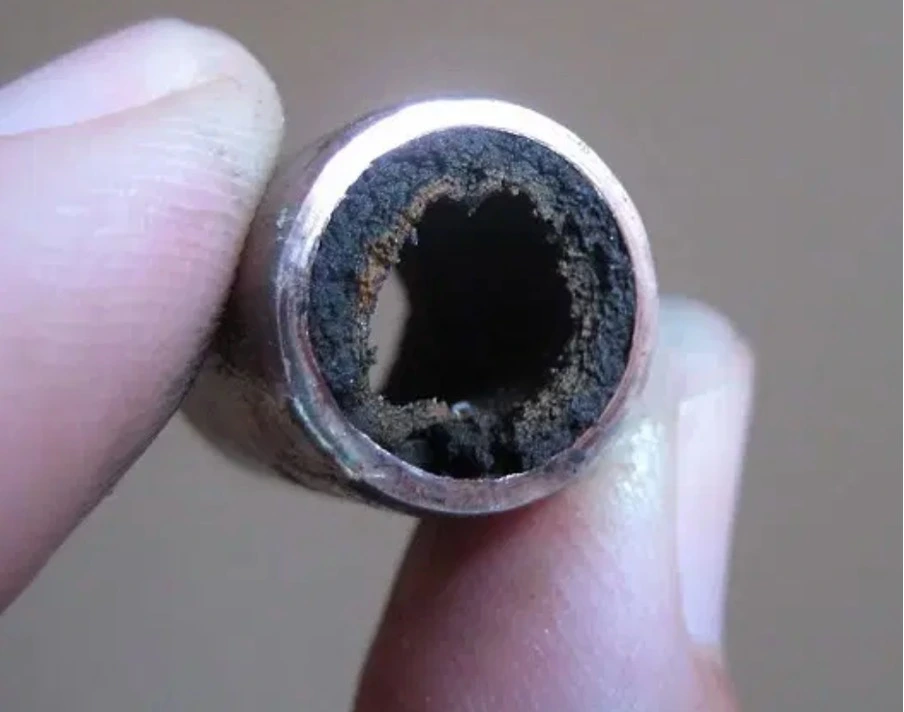
We’ve talked about using central heating sludge remover or inhibitor (same thing).
The inhibitor breaks the sludge, rust and limescale down making it easier to get it out of the central heating system and stopping cold radiators. To remove these, you’ll need to install an emptiable magnetic filter which catches and stores all the particles. Or alternatively have your heating system power flushed to exit all the debris.
To get things going we’ll explain what central heating inhibitor is, what it does and how to use it so that you don’t have to deal with multiple home-based headaches.
Inhibitor. What does is do in my central heating?
Over the years, your home will get a build-up of limescale, rust and other materials as your pipes and central heating system naturally erode.
This forms a gloopy, thick, ‘sludge’ that can obstinately sit in your pipes and radiators stopping the flow of hot water and resulting in cold radiators.
Not only will this put your boiler under avoidable pressure, reducing its life and efficiency costing you money, it can lead to blockages, burst pipes and system faults etc. needing the help of plumber. And all pretty much guaranteed to happen in the middle of winter.
Inhibitor. Can it remove sludge?

Not by itself. Inhibitor only breaks down the sludge making it easier to remove from the system. Getting it out requires a magnetic filter to be installed so that you catch and store the particles until the filter is emptied.
Benefits of inhibitor
- It does what it says on the bottle, so preventing corrosion and debris throughout your central heating system and prolonging its life. With a brand-new system or a new boiler, it’s a good idea to use central heating inhibitor so that your system or boiler is protected from day one.
- Saves you money in the long term on expensive new boiler parts and makes your boiler last longer through reducing the opportunity for blockages, faults, and breakdowns.
- Radiators warm up faster and your whole central heating system will be more efficient.
Regular boiler. How do I add inhibitor to an open-vented Central heating system?

If you’ve a large water tank and a small expansion tank in your loft you’ve an open-vented heating system. The inhibitor should be added to the feed and expansion or heating tank – the smaller of the two loft tanks.
Step 1. Stop the flow of water into the system through turning off the tank’s valve or shutting off the mains water supply.
Step 2. With the tank empty, if it’s clean and corrosion-free, add the inhibitor following the instructions on the bottle and according to the number of radiators in your home.
Step 3. If it’s not clean i.e. covered with rust, limescale or sludge give it a good scrub and then afterwards add the inhibitor.
Step 4. When the inhibitor’s been added, turn on the valve or the mains water.
Combi-boiler. How do I add inhibitor to my central heating system?

If you’ve a conventional radiator it’s not quite as straightforward but still easy, and the tools you’ll need are:
- Adjustable spanner/wrench
- Hosepipe (must be able to reach to an outside drain from your radiator)
- Jubilee clip
- Radiator key
- Flathead screwdriver
- Towels (to catch any drips)
- Funnel (to add inhibitor into radiator)
Step 1. Turn the heating off, then let all your radiators cool down completely.
Step 2. Connect the hosepipe to a radiator’s drain valve and tighten securely with the jubilee clip.
Step 3. Place a towel underneath to catch drips and then open the drain valve (found on the lowest part of the pipes attached to the radiator) letting out at least as much water as the amount off inhibitor being added. Afterward shut the drain valve off.
Step 4. Using your spanner undo the radiator bleed plug and attach the inhibitor dosing adaptor, if it doesn’t come with an adaptor, use a funnel, and pour in the inhibitor.
Step 5. Remove the funnel or adaptor and use your spanner to tighten the bleed plug. Don’t over tighten this as you’ll damage the ‘O’ ring.
Step 6. Turn on your radiator valves and check your boiler pressure, topping it up if needed.
Step 7. Bleed your radiators.
Inhibitor. How often should this be changed?
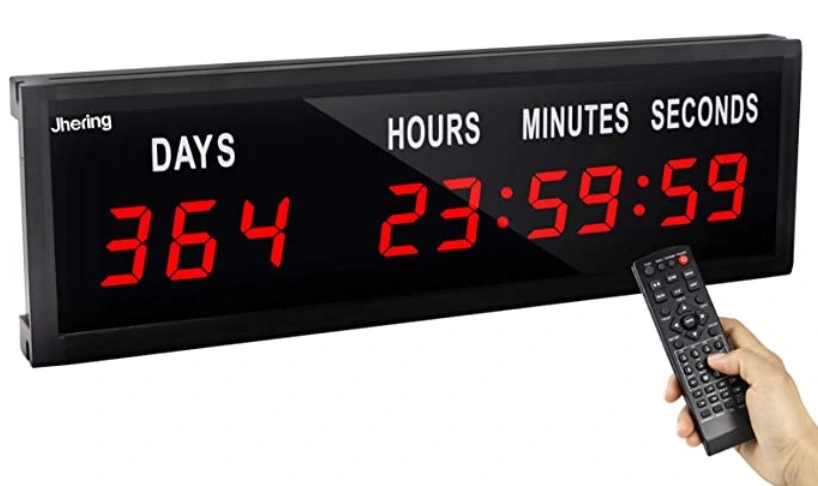
Inhibitors active chemicals breakdown and become less effective over time. To avoid rust and minerals from building up you should change your central heating inhibitor annually. And when your system is drained, always top up the inhibitor again as the inhibitor liquid will be drained along with all the water.
To check your inhibitor levels, use an inhibitor test kit which you’ll be able to get online or from your local DIY store.
Inhibitor. What if I use to much?

The short answer is no you won’t damage your system by overdosing on inhibitor.
But you should always follow manufacturer’s instructions on the bottle, putting in the right amount for your number of radiators. Also, from time to time use a testing kit to ensure the levels are topped up so that any sludge build up is prevented.
Inhibitor. 3 ways to make it go further?
Powerflush your radiators
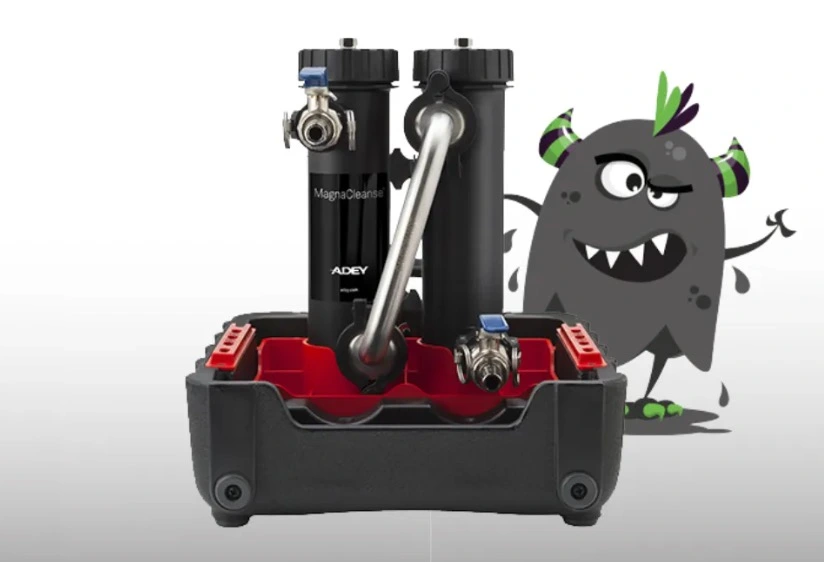
Inhibitor only breaks down the sludge in your system, so giving your radiators a power flush will get all of it out in one go.
Magnetic boiler filter
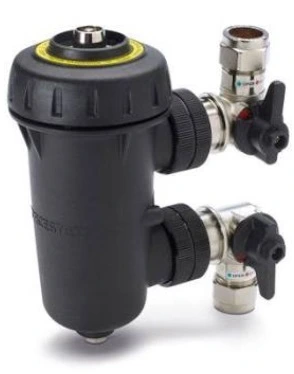
Add a limescale reducer
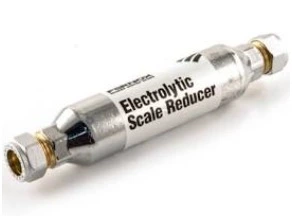
With the Thames Valley’s exceptionally hard water, limescale build up is a major problem for local central heating systems and a top cause of boiler breakdown and cold radiators. By using a simple electrolytic limescale inhibitor or reducer you’ll be able to avoid limescale build up and making a good investment.
Next steps?
If you’d like a hand with choosing the right inhibitor for your central heating system or introducing it we’re ready and waiting. And of course we’d be delighted to add a limescale reducer or magnetic filter, or powerflush a radiator or your whole central heating to improve its performance and save you money on energy bills and repairs!
See you soon....
That’s it for today! Until next time, you can always find us on www.angusplumbing.co.uk (we’ve a great on-line booking mechanism) or on Instagram, Facebook and YouTube. Or, if you wanted to, you can call, text or WhatsApp us on 07442 966664.
We’d love to hear from you, especially if there’s something, you’d like us to blog about.
All the best for now
The ANGUSplumbing team




